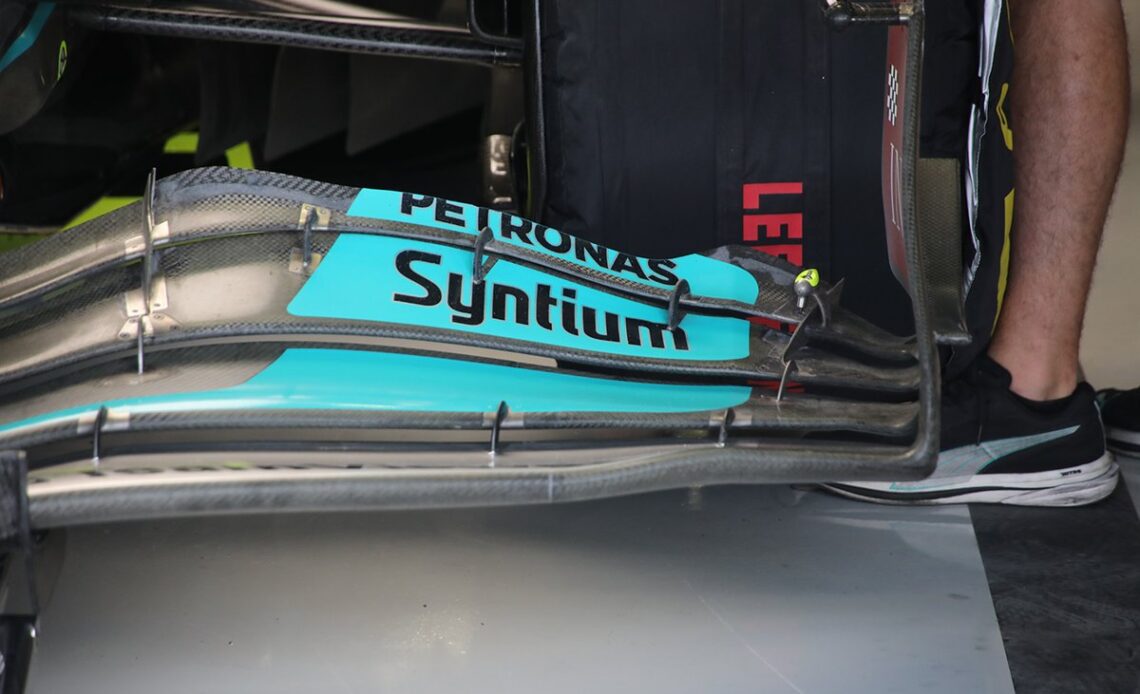At 2285m above sea level, the rarefied air creates a significant challenge in respect of car aerodynamics, cooling requirements and the performance envelope of the power unit.
All of this leads to teams running what might otherwise be considered odd choices, given it’s such a high-speed venue.
Mercedes experimented with its wing levels on Friday, not only as a means to hone in on the performance levels of the car at this venue but also for gathering meaningful data for next year’s car too.
Comparing the two front wings put into service during free practice outings, Lewis Hamilton’s car was fitted with the older specification version, with the trailing edge of the upper flap cut back quite significantly (left image, below).
Meanwhile, George Russell’s W13 was fitted with the new wing design, which features a revised design to the outer section of the flaps and a more contoured endplate to help generate outwash.
However, the team did opt to remove the controversial slot gap separator brackets that first appeared at the United States Grand Prix but remain unraced.
You’ll also note that chequerboard stickers were adhered to the front wing endplate on Hamilton’s car, with a camera used to capture footage of the wing whilst it’s out on track in order that the team can ascertain it’s performing as anticipated.
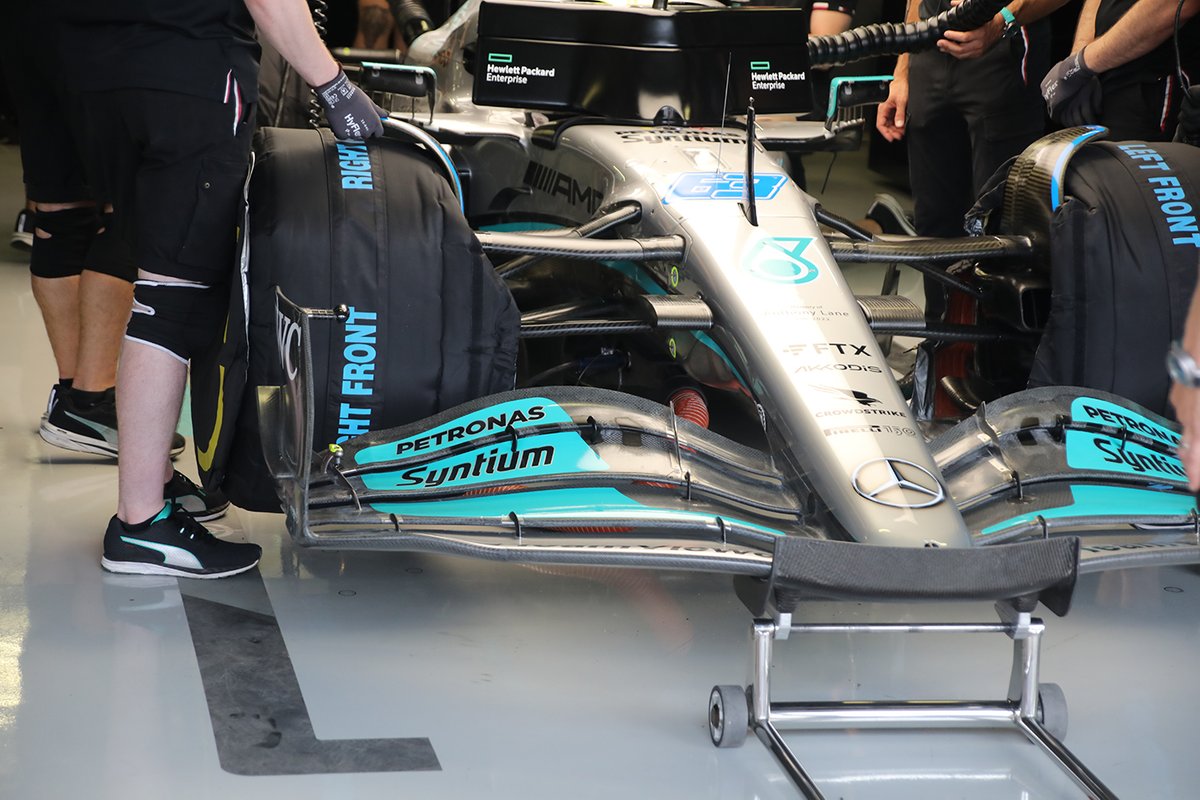
It was a similar story at the rear of the car too, as both drivers flirted with different arrangements.
George Russell carried a Gurney flap mounted on the trailing edge of the rear wing, whilst Hamilton, matching the cut-down approach taken with the front wing, was running the wing without one on his.
Following the tests conducted by Hamilton on Friday, both drivers opted for the newer front wing specification with a more loaded flap arrangement, plus the Gurney on the trailing edge of the rear wing’s upper flap for qualifying and the race.
Meanwhile, the maximum cooling option was taken up on both cars, with the panels beside the cockpit and the engine cover gills both opened up in order to reject the heat being generated.
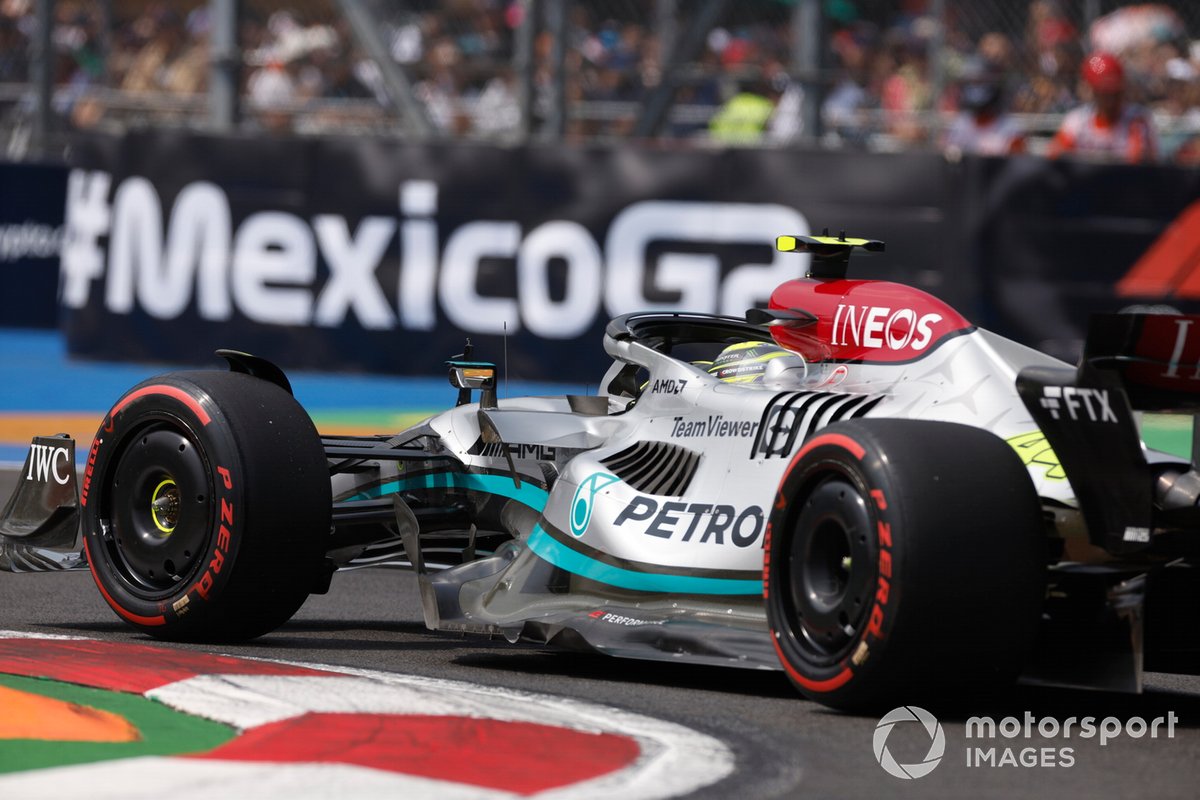
Lewis Hamilton, Mercedes W13
Photo by: Steven Tee / Motorsport Images
Red Bull also opted for more cooling to meet the demands being posed, as the RB18 ran with the louvred cooling panels on the shoulder of the engine cover and a new, wider, cooling exit at the rear that also flared on the trailing edge to help with extraction.
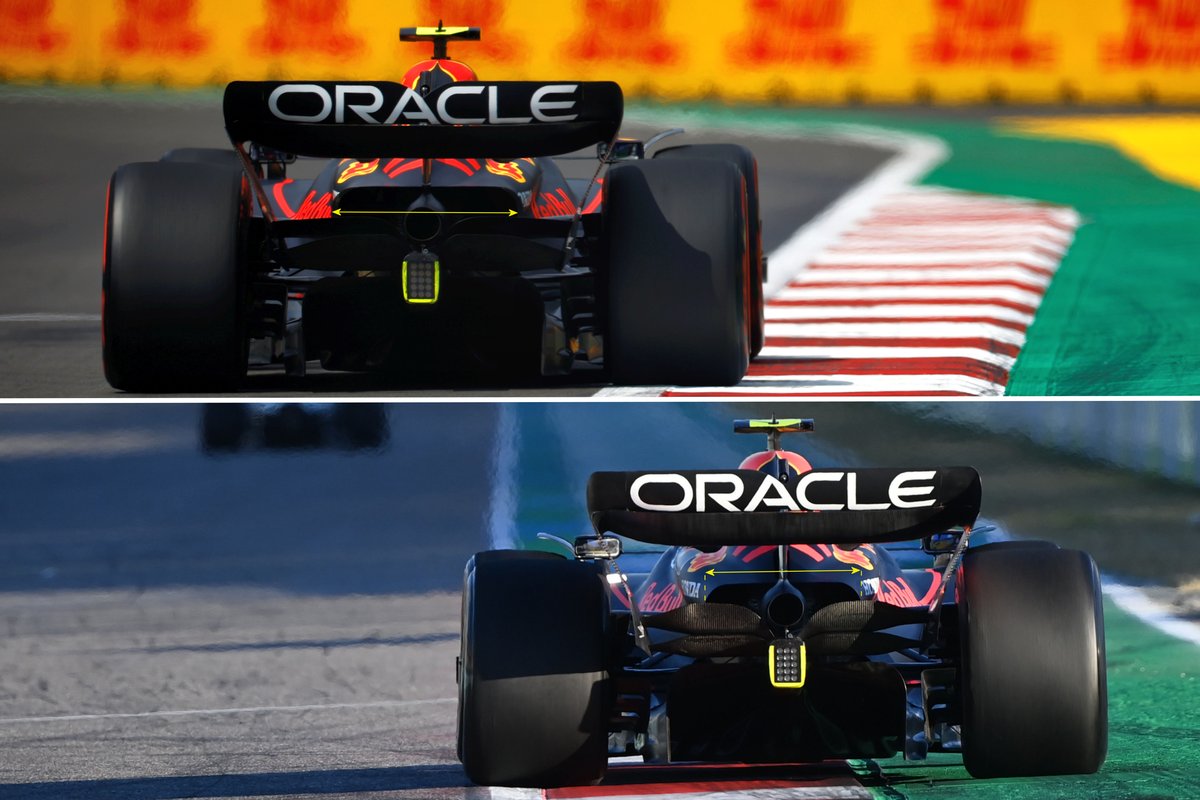
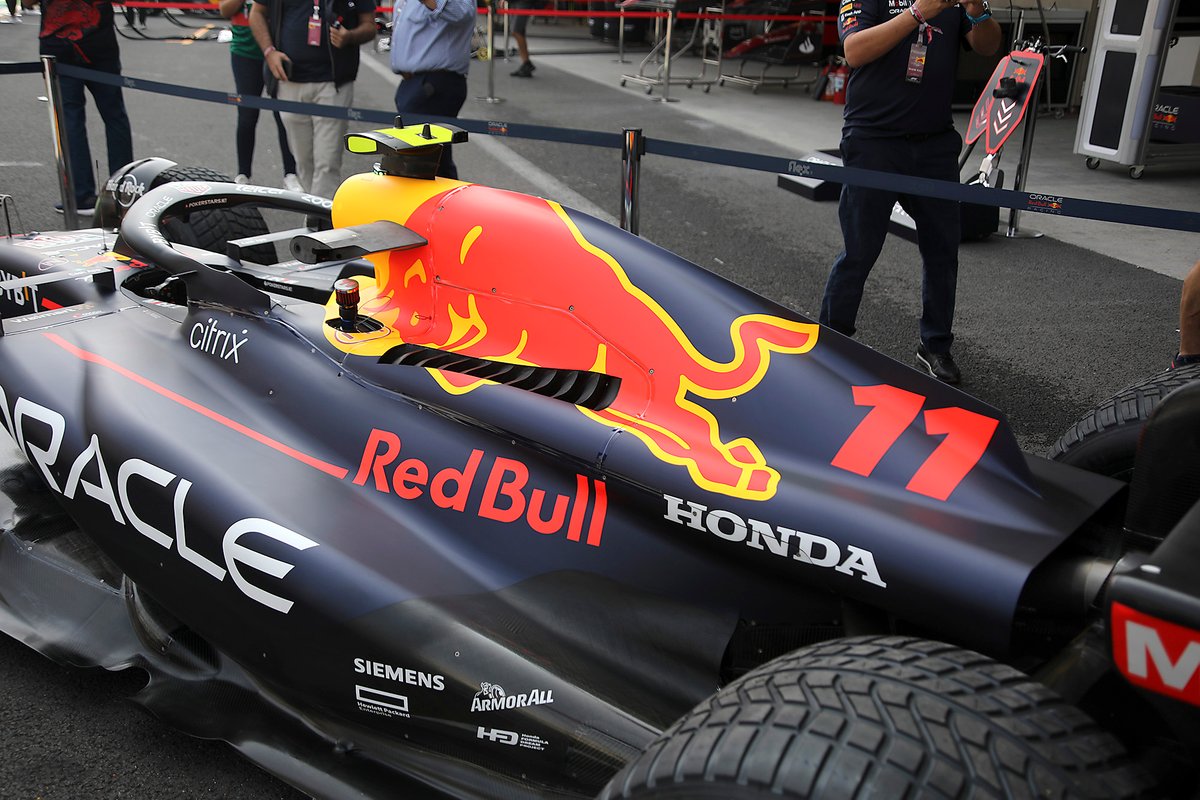
McLaren decided to take cooling in Mexico pretty seriously, as several…
Click Here to Read the Full Original Article at Motorsport.com – Formula 1 – Stories…

